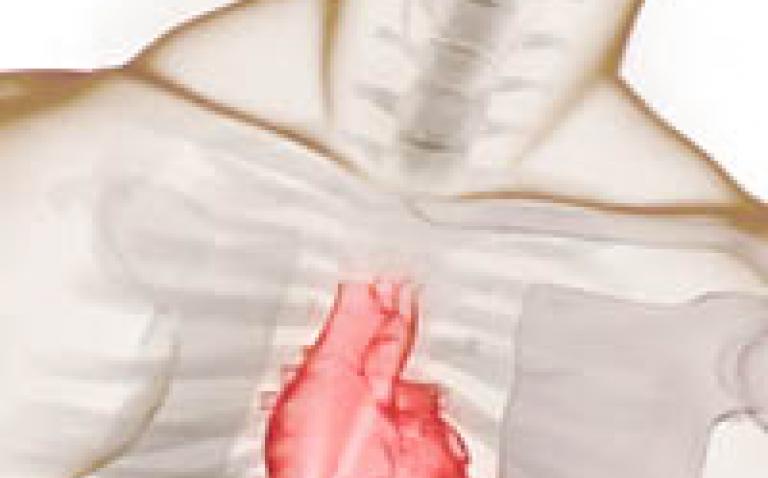Hearts previously rejected due to donors’ age or other risk factors can now be declared viable for transplantation using pharmacological stress echo, according to research presented at EUROECHO and other Imaging Modalities 2012. The study(1) was presented by Dr Tonino Bombardini from Pisa, Italy.
EUROECHO and other Imaging Modalities 2012 is the annual meeting of the European Association of Cardiovascular Imaging (EACVI),(2) a registered branch of the European Society of Cardiology (ESC).(3) It takes place 5-8 December in Athens, Greece, at the Megaron Athens International Conference Centre.
Heart transplantation is an established procedure in patients with end-stage heart failure but it is limited by a severe donor organ shortage. The average age of organ donors has increased and the donor is frequently a patient who died of a stroke. Every year in Europe a pool of 4,500 hearts for which permission has been granted for heart donation are unused.(4) “Many of these hearts could be used if we could increase confidence that the transplantation would be successful,” said Dr Bombardini, who is scientific coordinator of the Aged Donor Heart Rescue by Stress Echo (ADONHERS) Project.
“Currently, the use of hearts from donors = 50 years (of the total transplanted hearts) is just 21% in Europe and 12% in North America,” he added. “But the lengthening of waiting lists for heart transplantation is a significant healthcare emergency and as a consequence, the criteria for acceptance of donor hearts have been expanded to include donors over the age of 55 years.”(5)
Dr Bombardini continued: “Despite the expanded criteria, clinicians are hesitant to use hearts from older donors. The use of stress echocardiography to select hearts ‘too good to die’ may be a possible approach to resolving the mismatch between organ supply and demand.”
During 2005 to 2012, the ADONHERS Project included 66 candidate heart donors who would previously not have been considered due to their age or other risk factors. The average age of candidate donors was 55 years. After a legal declaration of brain death, 47 donors were still considered eligible and underwent dipyridamole (n=44) or dobutamine (n=3) stress echocardiography to look for coronary artery disease or cardiomyopathy abnormalities.
The researchers found 35 hearts without heart disease that were therefore eligible for transplantation. For six of these hearts, a matching recipient could not be found and a cardiac autopsy verified the absence of significant coronary artery disease or cardiomyopathy abnormalities.
The remaining 29 eligible hearts were successfully transplanted in emergency recipients. At 1 month, 26 patients had normal heart structure and function as assessed by angiography, intravascular ultrasound, haemodynamic tests and ventriculography. Three patients had minor single vessel disease.
After a median follow up of 27 months, 26 patients had survived and three had died (from general sepsis, neoplasia and recurrent multiple myeloma).
Dr Bombardini said: “An upward shift of the donor age cut-off limit from the present 55 to 65 years is acceptable if a stress echocardiography screening on the candidate donor heart is normal.”
He added: “Pharmacological stress echo is inexpensive and allows a simultaneous evaluation of inducible ischaemia and contractile reserve of the left ventricle – therefore, it is capable of unmasking prognostically meaningful occult coronary artery disease or cardiomyopathy.”
Dr Bombardini concluded: “Pharmacological stress echo is already an established technique that is used to assess and risk stratify patients with known or suspected coronary artery disease. We have shown that it can also be used to identify hearts suitable for transplantation that would previously have been unused. This requires cardiologists with experience of stress echo and ideally a second opinion from a cardiologist in a core lab (using tele-echocardiography), who can give the green light for donation.”
In addition to the above research, Dr Bombardini’s group will present two further abstracts on this topic at EUROECHO 2012.(6,7)
References
- Favourable short-term outcome of transplanted hearts selected from marginal donors by pharmacological stress echocardiography (abstract 50125)
- About the European Association of Cardiovascular Imaging (EACVI) The European Association of Cardiovascular Imaging (EACVI) is a registered branch of the ESC. Its aim is to promote excellence in clinical diagnosis, research, technical development and education in cardiovascular ultrasound and other imaging modalities in Europe. It was formerly called the European Association of Echocardiography (EAE).
- About the European Society of Cardiology (ESC) The European Society of Cardiology (ESC) represents more than 75,000 cardiology professionals across Europe and the Mediterranean. Its mission is to reduce the burden of cardiovascular disease in Europe.
- Council of Europe, Donation and Transplantation, 2011
- The International Society for Heart and Lung Transplantation (ISHLT) guidelines for the care of heart transplant recipients recently recommended that the use of donor hearts > 55 years should only be used if the survival benefit of heart transplantation for a recipient unequivocally exceeds the decrement in early heart transplantation survival due to transplantation of a heart with limited myocardial reserves.
- Wait, treat and see: echocardiographic monitoring of brain-dead potential donors with stunned heart (abstract 50250)
- Second-opinion stress tele-echocardiography for the Adonhers (aged donor heart rescue by stress echo) project (abstract 50123)










